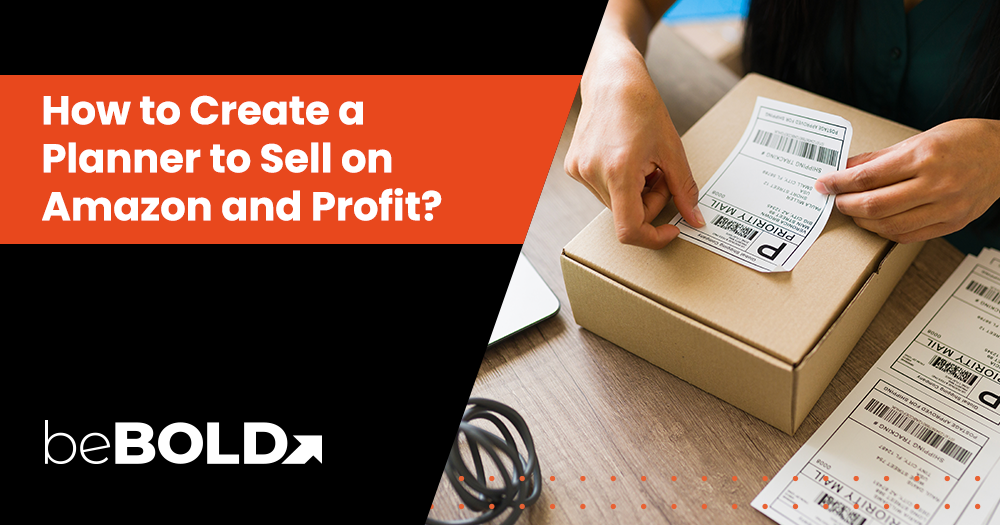Key Highlights
- Planner creation can cost $0 using free tools like Canva and Google Docs, or $20–$50 if using premium design aids like Book Bolt or Creative Fabrica.
- A strong niche is key to standing out and attracting consistent sales.
- The ideal beginner timeline from idea to first live product on KDP can be completed in 7 days, with flexibility to go slower.
- Interior and cover design are simplified using drag-and-drop tools or customizable PLR templates.
- Keyword research using BSR, competitor analysis, and Amazon-specific tools is crucial for visibility and discoverability.
- Listing optimization includes strategic pricing, strong product descriptions, relevant categories, and clean design elements.
- Scaling your planner business means gathering reviews, improving based on feedback, and expanding your catalog within a niche.
You’ve probably bought a planner before—but have you ever thought about selling one? With Amazon KDP, you can design and publish planners without printing a single copy. It’s simpler than most people think, and with the right guidance, you can choose a niche, create a planner using beginner tools, and start a side hustle that earns real income. Ready to turn your idea into profit?
How Much Does It Cost To Create A Planner?

Let’s talk numbers — because before you get into creating your first planner, you probably want to know: what’s this gonna cost me?
Here’s the good news:
Creating a planner for Amazon KDP doesn’t have to break the bank. In fact, you can get started for free, or spend a little if you want to speed things up and make your product shine.
Let’s break it down:
Basic Tools (Free to Low-Cost)
|
Feature / Tool |
Free Option |
Paid Option |
Cost Estimate |
|
Design Tool |
Canva Free |
Canva Pro |
$12/month |
|
Interiors |
Create Yourself |
PLR or KDP Templates (Book Bolt) |
$10–$40 |
|
Keyword Research |
Manual (Amazon Search Bar) |
Titans Pro / Publisher Rocket |
$10–$97 |
|
Uploading to Amazon |
Amazon KDP |
Amazon KDP |
Free |
|
Stock Graphics/Fonts |
Free Libraries (Canva, Unsplash) |
Creative Fabrica |
$4.99/month |
|
Total Estimated Setup |
$0 |
~$20–$50 to start |
- Canva (Free or Pro): The free version is totally enough to design your planner pages and covers. Want extra templates, fonts, and graphics? Canva Pro is around $12.99/month.
- Amazon KDP Account: 100% free. No upfront costs to list your planner.
- Google Docs / PowerPoint: If you’re old-school or love tweaking layouts, these free tools work just fine too.
Optional Paid Tools (Helpful, Not Mandatory)
- Book Bolt – $9.99/month: An all-in-one KDP tool to research niches, design interiors, and create covers. Great for speeding things up.
- Creative Fabrica – $3.99/month (or pay-as-you-go): Get access to pre-made interiors, fonts, and illustrations.
- PLR Planners – Varies: You can buy done-for-you planners (with edit rights) for $10–$40 depending on the pack. Just customize and upload.
How to Create a Planner to Sell on Amazon (Step-by-Step)?

Now let’s walk through the process step by step. Whether you’re going DIY, semi-custom, or going full PLR mode, this framework will guide you through the entire journey from idea to first sale.
Step 1: Market Research & Niche Planning

Before you even start designing, you need to know who you’re creating for and what’s already working.
- Spy on top performers: Search “planner” on Amazon, filter by “Books” and sort by Bestsellers. Study the titles, formats, pricing, cover designs, and page previews.
- Check BSR (Best Seller Rank): A planner ranked under 100,000 is selling regularly. Under 10,000? It’s killing it.
- Look for gaps: Are there planners for dog trainers? Tattoo artists? New moms of twins? A micro-niche might mean less competition.

Source: Pinterest
The more targeted your planner is, the more likely it is to connect with buyers who feel like it was made for them.
Here are a few ideas you can start your research with-
- Homeschool planners
- Fitness and wellness planners
- Business planners for side hustlers
- Wedding planners
- Student planners (college, nursing, med school)
- Mental health or self-care planners
- Mom life planners
- Budgeting and finance planners
- Content creator planners
- Teacher or classroom planners
- ADHD or neurodivergent planners
- Daily devotionals or faith-based planners
If you want to try your hands on publishing your first book on Amazon, here is your launchpad guide- Amazon Ads for Books: How It Works, How to Start, FAQs.
Step 2: Structuring & Content Planning
Now that you’ve got your niche, it’s time to map out your A+ content.

Source: Canva
- Start with function: What problem does your planner solve? Time management? Wellness? Goal tracking?
- Mix in value: Include extras like habit trackers, mood logs, quote pages, or even QR codes linking to online resources.
- Add a twist: Turn a simple weekly planner into a “self-care productivity system” or “planner-journal hybrid.”
- Think user experience: Will this planner be used daily? Does it flow logically? Are the sections intuitive?
Pro Insight: Simplicity wins. Clean layouts are more attractive, easier to print, and faster to create — especially for your first product. For more tips on how to be a bestseller on Amazon, read our blog here.
Step 3: Designing the Interior

Design is where your planner turns from an idea into a sellable product — and it has to look professional.
- Tools: Canva (great for beginners), PowerPoint (surprisingly effective), Affinity Publisher (for advanced control), or Book Bolt (template-based).
- Watch your margins: KDP is strict about bleed, spacing, and alignment. Use their templates or preview tools often.
Step 4: Create a Standout Cover
Covers sell planners. Period.
- Design to stand out: Use bold fonts, high-contrast colors, and trendy aesthetics.
- Use KDP’s cover calculator to get the exact dimensions for your trim size + page count.
- Include keywords in the subtitle (without looking spammy).
- Use mockups: Show off your planner in real-life settings (on desks, in hands) for your Amazon A+ Content, Pinterest, or social posts.
Step 5: Uploading to Amazon KDP (The Right Way)

Don’t just throw your files up there. Optimize.
- Title = SEO: Include the niche and planner type (“Busy Mom’s Weekly Planner” > “The Organized Life”).
- Subtitle = Keywords: Drop in SEO-friendly words naturally. Ex: “Undated Daily Productivity Planner for Women, Students, Entrepreneurs.”
- Backend keywords: Use all 7 slots in your KDP dashboard. Think like a buyer: “fitness planner,” “goal tracker,” “undated planner,” etc.
- Pricing sweet spot: $7.99 to $12.99 is the impulse-buy zone. Try $9.99 to start — test and tweak later.
Pro Insight: Amazon shoppers don’t read — they skim. Make your listing clear, benefit-focused, and keyword-optimized.
Step 6: Promote Like a Pro
A planner won’t sell just because it’s live — even if it’s amazing. Time to hustle.

- Amazon Ads: Run a low-budget auto campaign to start. Let Amazon figure out what’s working.
- Pinterest is gold: It’s made for planners. Post lifestyle images and pin your cover designs regularly.
- Build a brand: Offer matching digital downloads, freebies, or an email opt-in in the book (like a printable bonus).
- Social proof matters: Encourage reviews — even just one good review can lift visibility and trust.
Insider Tip: Marketing is not optional. The best planners on KDP are rarely the prettiest — they’re the best marketed.
Step 7: Track, Improve & Scale
Once your first planner is up, your real business begins.
- Check analytics: Use KDP reports, ad dashboards, and sales rank tracking.
- Update listings: Tweak your title, subtitle, price, or cover if you’re not getting clicks or conversions for listing optimization.
- Repurpose: Turn one planner into a series — add different designs, themes, or yearly editions.
- Rinse and repeat: The more quality planners you publish, the better your chances of passive income.
Keep in mind: Many successful sellers make most of their money from multiple planners, not just one. Volume + quality = sustainability.
How to Create a Planner with Canva From Scratch or an Existing Template?
We found a detailed tutorial by Rachel Harrison-Rund that shows exactly how you can design your planner using Canva — whether you’re starting from a blank page or customizing a ready-made template.
Here’s how to do it step by step.
Step 1: Set Up Canva

- Go to Canva.com and create a free account.
- Decide what type of planner you want to create (e.g., daily, weekly, or both).
- Choose a trim size compatible with Amazon KDP (e.g., 6x9 inches is a popular choice).
Step 2: Create Your Design File

- Click Create a Design > Custom Size > enter the dimensions in inches (e.g., 6x9").
- Go to File > Show Margins and optionally Show Print Bleed.
- Set proper margins based on KDP’s page count guidelines (e.g., 0.375" inside, 0.25" outside for 24–150 pages without bleed).
Step 3: Design the Planner Interior

- Choose a template or design from scratch.
- Customize:
- Change fonts to be legible (minimum ~8pt).
- Rearrange or remove design elements you don’t need.
- Add custom sections like gratitude, wins, notes, etc.
- Use Option + Shift (Mac) or Alt + Shift (PC) to duplicate elements and maintain alignment.
- Optional- Keep the design black and white to reduce KDP print costs.
Step 4: Add Weekly Pages

- Duplicate your daily page and modify the layout for weekly planning.
- Maintain consistency in font and style.
Step 5: Add Title and Copyright Pages

- Add a new first page for your Title Page (add heading, subheading, visuals).
- Add a Copyright Page (include copyright symbol — Option + G on Mac / Ctrl + Alt + C on PC).
Final structure example: 1 title + 1 copyright + 12 weekly + 84 daily = 98 pages.
Step 6: Export the Interior File

- Go to Share > Download > PDF Print.
- Set color mode to RGB (or CMYK if you have Pro).
- Don’t include crop marks or bleed unless your design goes to the page edge.
- Print a few sample pages at home to check legibility and layout.
How to Create a KDP-Ready Planner Cover in Canva?
Follow this guide to create a standout, print-ready cover with ease.
Step 1: Generate a Cover Template

- Visit the KDP Cover Calculator.
- Enter your book type, interior specs, trim size (e.g., 6x9"), and page count (e.g., 98 pages).
- Download the generated PNG cover template and note the custom dimensions (e.g., 12.52" x 9.25").
Step 2: Set up and Design

- Open Canva and choose Create a Design > Custom Size, entering the exact KDP dimensions in inches.
- Upload the PNG template as a background guide. Reduce opacity and lock it in place.
- Design the front cover, back cover, and spine with your title, visuals, and branding. Keep key elements inside the safety margins and extend background to the bleed edges if needed.
Step 3: Export Your Final Cover

- Once satisfied, delete or hide the template layer.
- Go to Share > Download > PDF Print.
- Choose RGB color mode (or CMYK if using Canva Pro).
- Do not include crop marks.
- Download your file and preview it before uploading to KDP.
Scaling Up: What to Do After Your First Planner Goes Live?

So, your first planner is live. (Huge win!) You’ve hit publish, and now… what?
This is where things get interesting — and where you shift from one-product wonder to planner-preneur mode.
Here’s how to scale your efforts and build a real business around your planners:
1. Dive Into Your KDP Dashboard Data
Your Amazon KDP dashboard isn’t just a place to check sales — it’s your insights goldmine.
You’ll want to monitor:
- Page views (Are people finding your planner in search?)
- Conversion rates (Are browsers becoming buyers?)
- Royalties (Is your pricing strategy working?)
2. Read the Reviews (Even the Brutal Ones)

Customer feedback is basically free research.
Scan through what buyers are saying. Are they confused by the layout? Want more pages? Asking for specific features?
Use that insight to:
- Improve your current planner
- Create an upgraded version
- Launch a new product that solves their specific problems
3. Create Variations, Bundles, or Upgrades
Once your planner template is built, it's easy to remix it into new versions.
Some ways to scale quickly:
- Bundle your planner with matching journals, trackers, or workbooks
- Offer both dated and undated options
- Experiment with different styles, sizes, or audiences
The goal is to turn one great idea into a whole collection.
4. Build a Niche Catalog
Instead of jumping between niches, stick with one and go deep.
Let’s say you launched a student planner. You could build around that theme with:
- Semester-specific versions
- Test prep or exam countdown planners
- Academic goal trackers
- Parent-teacher communication logs
This makes your brand recognizable and builds trust with buyers looking for more in the same style.
5. Consider Ads (Once You’ve Got Some Data)

Amazon ads can give your planner the visibility boost it needs — but timing is key.
Before diving into ads, make sure you have the following:
- A few high-quality, well-optimized products
- Basic sales data to help you choose the right keywords
- A small ad budget you’re okay experimenting with
Start simple with automatic campaigns. Once you see what keywords are converting, switch to manual targeting to maximize results.
Want More Eyes on Your Planners? Here’s How

Once your first few products are live and you’ve validated that people are clicking (and buying), Amazon PPC is the lever that helps you scale. It’s not just about visibility—it’s about being strategic with your listings, targeting keywords your ideal buyers are actually searching, and analyzing metrics like ACoS (Advertising Cost of Sale) and TACoS (Total Advertising Cost of Sale) to make smarter decisions over time.
That’s exactly why many planner sellers team up with an Amazon Ads agency like beBOLD, especially when they’re ready to go from "just listed" to top of search.
Instead of gambling on auto-ads or burning budget on guesswork, beBOLD builds data-backed campaigns that amplify what’s already working. Our team of ad specialists focuses on driving relevant traffic, manage seller and vendor accounts, improving ROI, and helping your product stand out in a sea of notebooks.
If you're ready to treat your planner brand like a real business, this is one of the most impactful next steps you can take.
Drive targeted traffic and dominate your niche with beBOLD.
Conclusion
Whether it’s your first or fiftieth listing, each planner becomes part of a growing ecosystem that keeps working for you long after the design is done.
The real game-changer? Consistency.
So go ahead, get that first planner out into the world. Then improve. Iterate. Explore new niches. You’re not just making printables—you’re building digital real estate on one of the biggest marketplaces in the world.
Frequently Asked Questions
What’s the first step in creating a planner to sell on Amazon?
The crucial step is identifying your target audience and selecting a niche that solves a real problem. From there, analyze similar products on Amazon to study their design elements, product descriptions, and formatting. Once you understand what works, you can move on to designing using tools like Adobe InDesign or Canva, then publish through Kindle Direct Publishing.
What types of planners sell best on Amazon?
There are various types of planners that work well depending on who your potential buyers are—budget planners, fitness planners, study planners, or planners for specific professions. The key is to focus on a niche that helps you reach a wider audience or a passionate micro-niche.
How can I promote my planner and attract potential customers?
Use social media platforms like Instagram, Facebook, and Pinterest to connect with your followers and drive traffic. Create valuable blog posts around your planner's use cases and collaborate with bloggers to review your product. This builds trust with your potential customers and boosts visibility.
Should I offer my planner as both a physical book and a digital download?
Yes. Offering both a PDF ebook version and a physical planner via Kindle Direct Publishing helps you reach different kinds of potential buyers—those who want instant access and those who prefer a printed planner shipped to their door.
How do I grow my planner business after launching one product?
Focus on continuous improvement—optimize based on feedback, refine your customer service, and expand your catalog. Look for gaps in similar products, adjust your product descriptions, and reinvest in what’s working to build a stronger planner business.
Cut wasted ad spend and grow profitably — get started with beBOLD today.









Comments